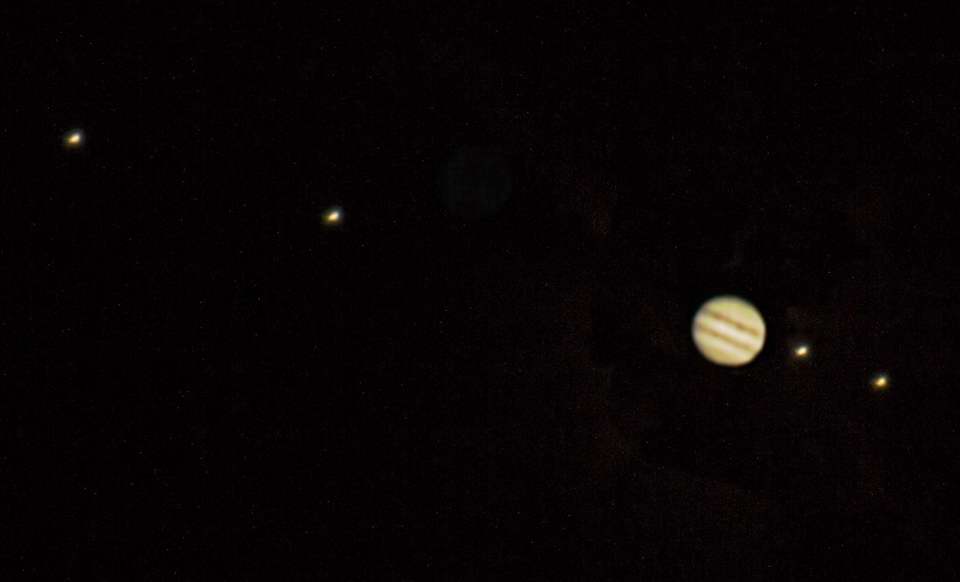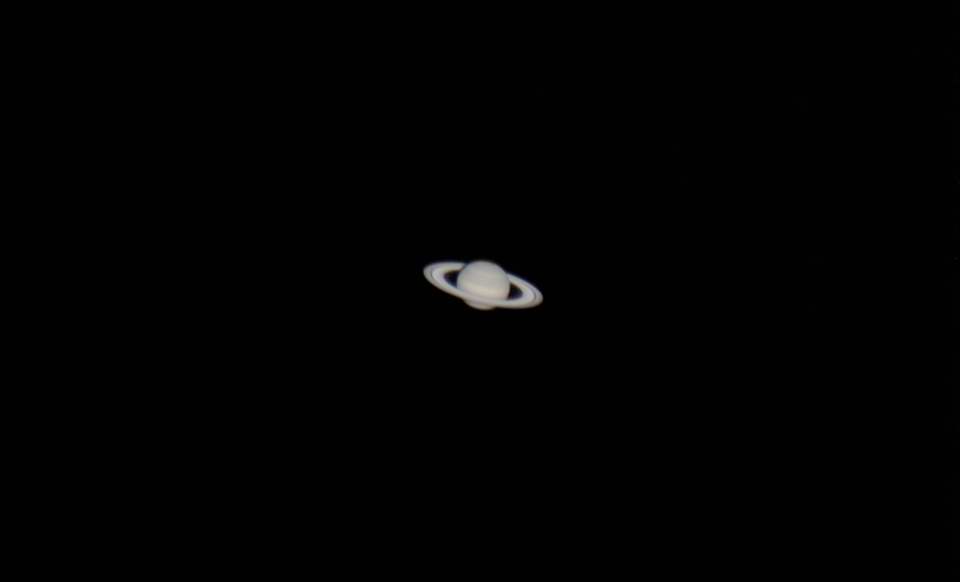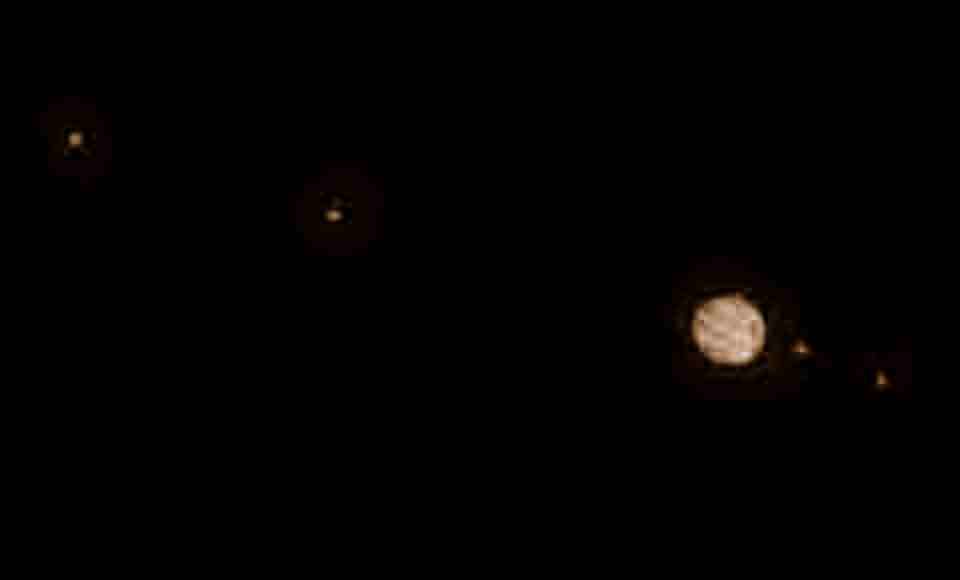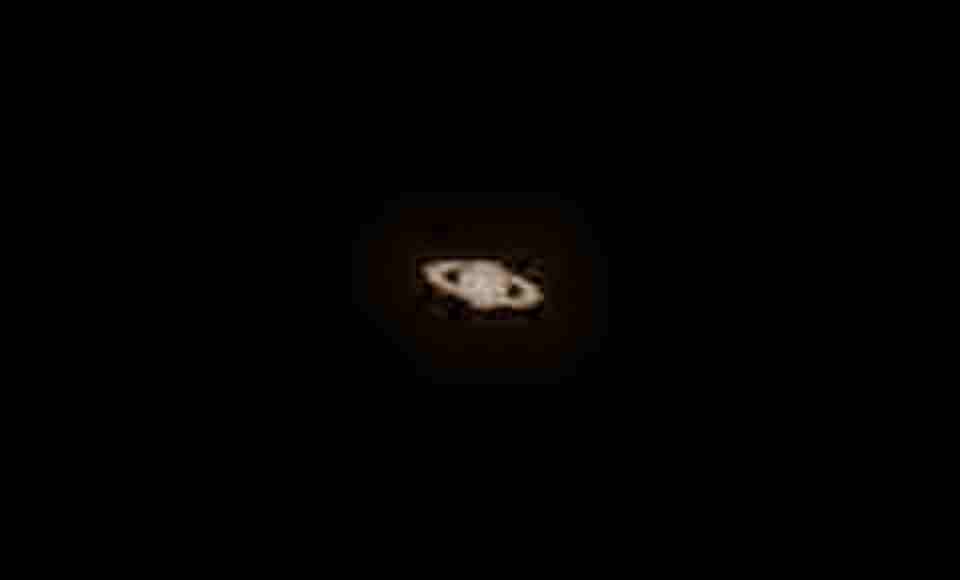Jupiter/Saturn Great Conjunction of 2020
If you've been looking in the southwest sky just after sunset you'll see Jupiter and Saturn very close in the sky. Jupiter is the bright one while
Saturn is fainter. Night after night they'll get closer to one another until the evening of December 21st when they will be
just 1/10th of a degree apart (1/5th the width of the full moon)! These two planets have not been this close since the year
1623 A.D.!
However, you might read accounts that it was actually 1226 because the planets were too close to the sun in 1623 for it to be visible.
To the unaided eye the two planets will probably look like a single star. After the 21st, the planets will start to separate. This conjunction
has also been labeled the "Christmas Star" because: 1) the proximity to December 25th, and 2) a there's a theory that the biblical tale of the
Star of Bethlehem could have been a planetary conjunction.
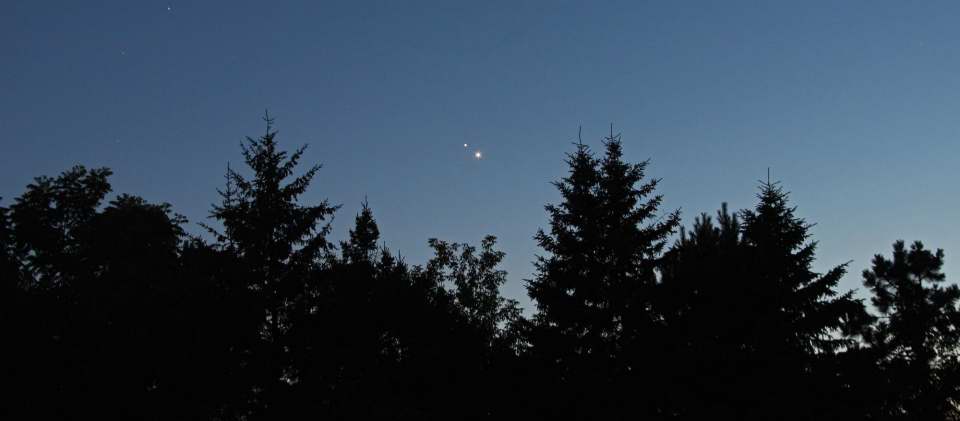
Above: Jupiter and Saturn. Jupiter is the brighter one with Saturn to the upper left as seen on December 7th.
The great thing about this event is you need only your eyes to view it. But if you have a pair of binoculars, you should
have them available.
But hindering this event is that it is not easy to see. Though every night until the 21st the planets get closer, they also get lower in the
southwestern sky, setting earlier every night. This means in order to see the planets you must have a relatively good southwestern sky without trees. And then they will not
stay in the sky very long. Within less than an hour the planets will set. So you really want to be ready at dusk. Though the planets will probably
appear to be just a single star to the eye, through binoculars it will be easy to see both planets.
One nice thing about this event is that if you can't view it on the night of December 21st (e.g., weather, prior commitment), you'll get a good
view several days before and after. This is very good because historically December is normally the cloudiest month of the year.
Scout a Location
If you are unsure if a location will permit viewing of this event, we strongly suggest you do some scouting. Any night before the 21st you
should see 1) are Jupiter and Saturn readily seen and not behind trees, noting that they will be lower every night, and 2) that they are readily
visible. Jupiter is fairly bright so will be no problem, but Saturn is considerably fainter. If it's not readily seen, we recommend you try to
find a darker location.
MAS Observatory Closed
For a number of reasons, the MAS Observatory will not be open to the general public for viewing, the most important one is the ongoing COVID-19
situation. In fact the observatory has been closed for most of the year.
What is a Great Conjunction?
A great conjunction is a conjunction of the planets Jupiter and Saturn, when these planets appear to converge together in the sky. In reality they
are nearly
half a billion miles apart so it's only from our perspective they look close. These conjunctions
only occur every 19.6 years, when Jupiter overtakes Saturn in the sky. Jupiter takes 11.9 years to orbit the Sun whereas Saturn's is 29.5 years.
Each planet moves East in the sky every day, with Jupiter moving further East than Saturn. Jupiter finally overtakes Saturn in 19.6 years.
Once in 400/800 Years Event?
Though you might have read that somewhere, this is not true as you can see from the above discussion of the definition of a Great Conjunction. The
reason for the hype, however, is based on the fact that the December 21st conjunction is especially close. The only recent conjunction that was closer
occurred in 1623 so nearly 400 years ago. But there are also accounts that say it was actually 1226 because the planets were too close to the
sun in 1623 for it to be visible. However, as we've shown these events happen about every 20 years. And if you're talking about really close
conjunctions, there will be one as close in 2080!
This event has been labeled by some as a "Christmas Star." There are two reasons: (1) the proximity to December 25th, and (2) a planetary conjunction
is one of the scientific explanations for the Star of Bethlehem. In fact, specifically a conjunction like this one - a Jupiter and Saturn alignment. We
have a
good article on this written in 1958 by the MAS founder,
Luverne Armfield with a full explanation.
In A Telescope
The images above are good representations of what Jupiter and Saturn look like in a small telescope. So though you may think
this conjunction would be best seen in a telescope, there is a big problem: image clarity. Planet viewing in a telescope is subject
to what astronomers call "seeing" which is a measure of atmospheric turbulence. The air in the atmosphere is always in motion, sometimes very little
(good seeing so better image clarity) and sometimes very turbulent (bad seeing so poor image clarity). When you're looking at a object in a telescope
which is directly overhead, you're looking through about 10 miles of atmospere. At 45° (half way to the horizon) it's 15 miles. But as you
approach the horizon it's over 90 miles. This means any turbulence will be greatly amplified when viewing anything close to the horizon such
as this conjunction. And as you've seen through personal experience,
the sun gets much dimmer as it approaches the horizon. Consequently your view of these planets will probably resemble the following:


